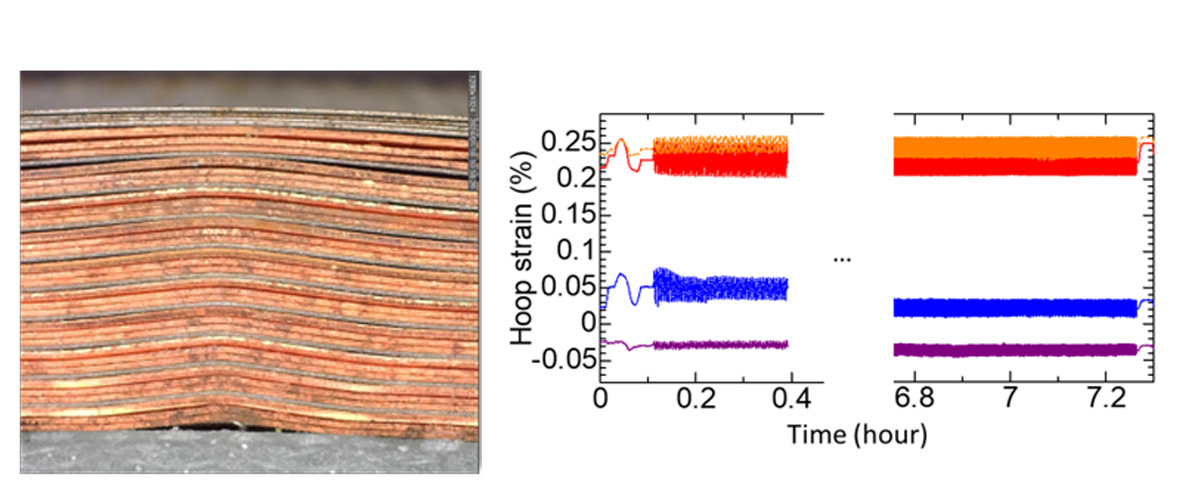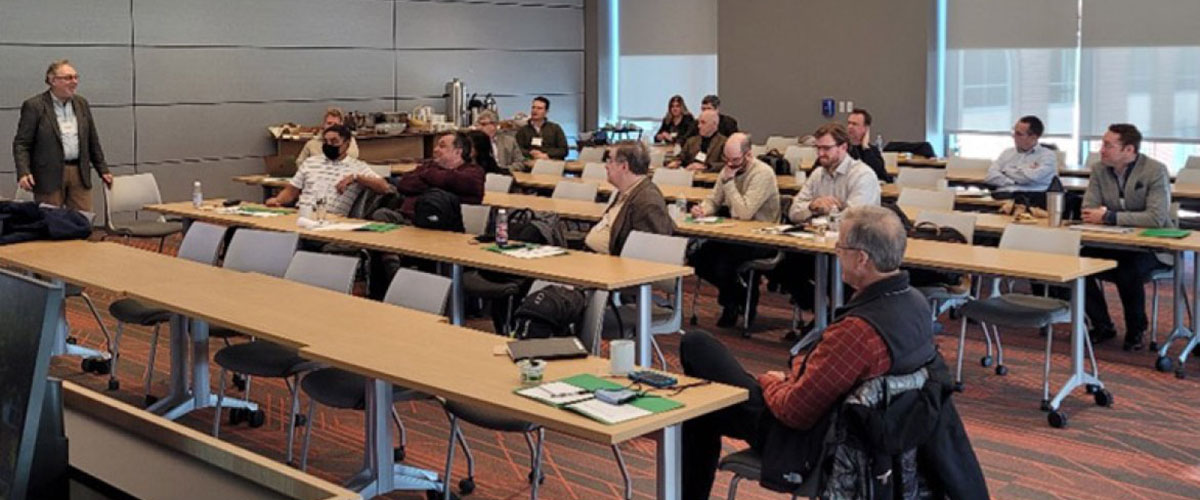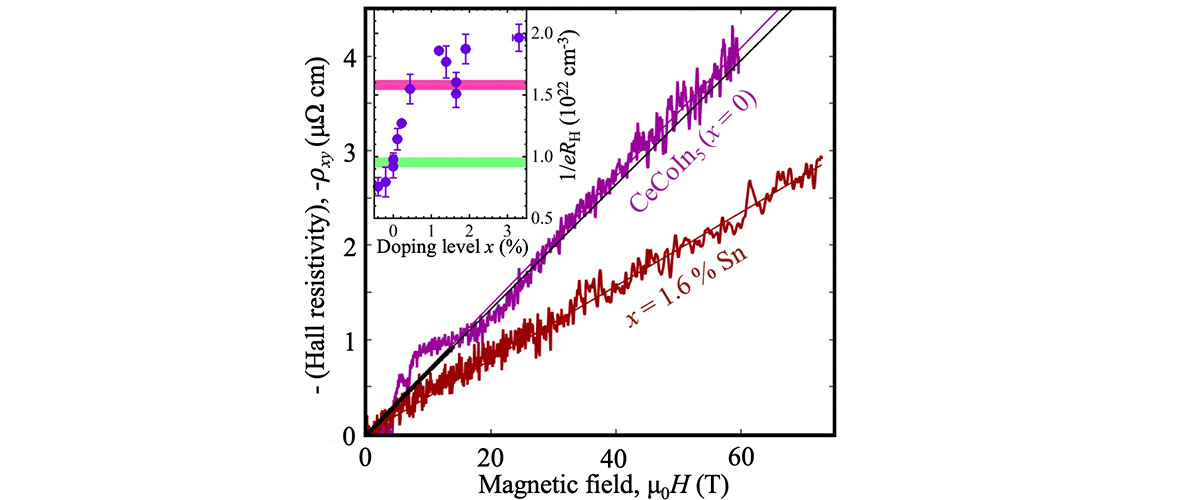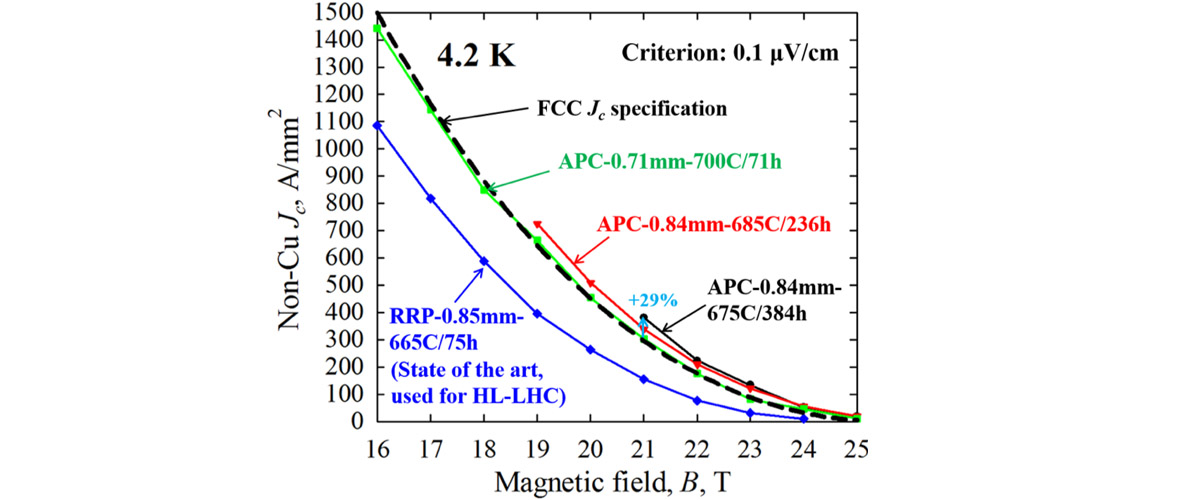What is the finding?
Coils made with REBCO (Rare Earth Barium Copper Oxide) high-temperature superconductor were tested under combined loads of cyclic axial pressure and electro-magnetic loads. The results of the tests show that coils can survive cyclic pressure of 80MPa with tapes deformed up to an angle of 10°. Additionally, it has been determined that coils in hoop compression with strains beyond -0.4% can buckle.
Why is this important?
Magnet engineers will use this data to help complete the design of the 40T all-superconducting magnet with confidence. REBCO high-temperature superconducting tapes are very thin, approximately the thickness of a human hair, and about a quarter to half inch wide. These tapes are then wound into a coil much like a roll of ribbon or tape and then stacked and interconnected to form stacks of coils nested together in the next-generation 40T magnet. It is in this stack of coils that extreme magnetic forces press against the thin side of the tapes when the magnet is energized. It is of utmost importance to know the limits of this tape under these magnetic loads to verify that the design forces predicted in the 40T magnet can be supported over the lifetime of the magnet. Finding the point at which the tapes will buckle will also be used to ensure these limits are not exceeded in the final design.
Who did the research?
Iain Dixon1, Todd Adkins1, Yu Suetomi1, Kwangmin Kim1, Hongyu Bai1
1National High Magnetic Field Laboratory
Why did they need the MagLab?
The MagLab has a unique test facility that has been used over the past 30 years to characterize the current carrying capacity of Nb3Sn-cabled conductors at different applied magnetic fields and tensile strains. The Oxford 12T split magnet with its hydraulic 250kN actuator was modified to also place coils into compression. This MagLab test facility is the only test facility in the world that can expose coils to extreme conditions of both axial pressure and circumferential/hoop strains.
Details for scientists
- View or download the expert-level Science Highlight, Simulating High-Magnetic-Field and High-Stress Conditions of Superconducting REBCO Coils
- Read the full-length publication, REBCO Coils With Variable Co-Wind Dimensions Under Static and Cyclic Axial Pressure Loads at 77 K, in IEEE Transactions on Applied Superconductivity
Funding
This research was funded by the following grants: G.S. Boebinger (NSF DMR-2128556, DMR-1644779, DMR-1938789, DMR-2131790)
For more information, contact Iain Dixon.






